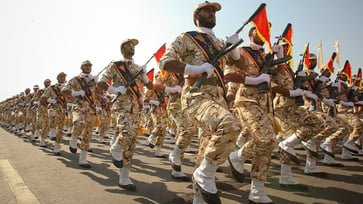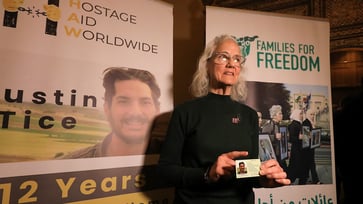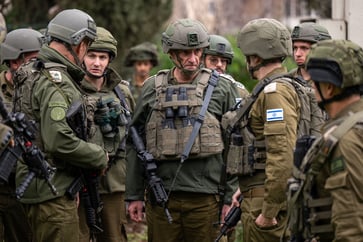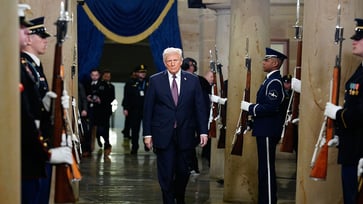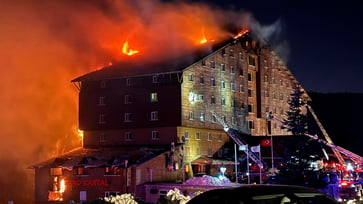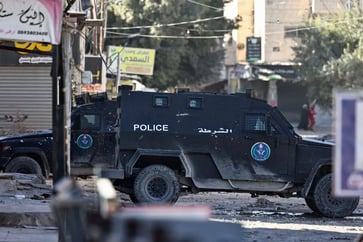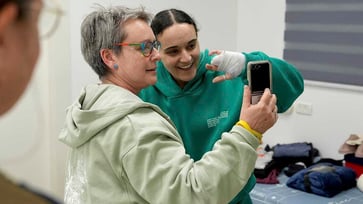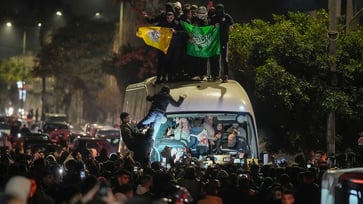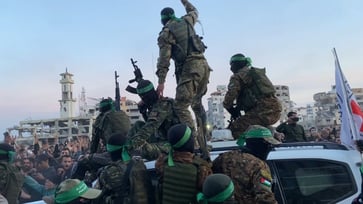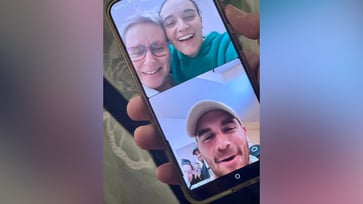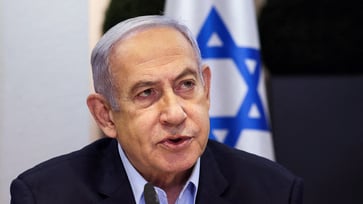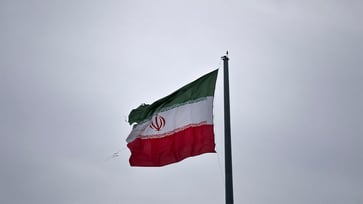Witness to Hamas terrorists in Gaza's deadly Netzarim corridor: 'The challenges are relentless'
'I've never witnessed anything like the way Hamas mistreats women and children in an extremely cruel manner.'
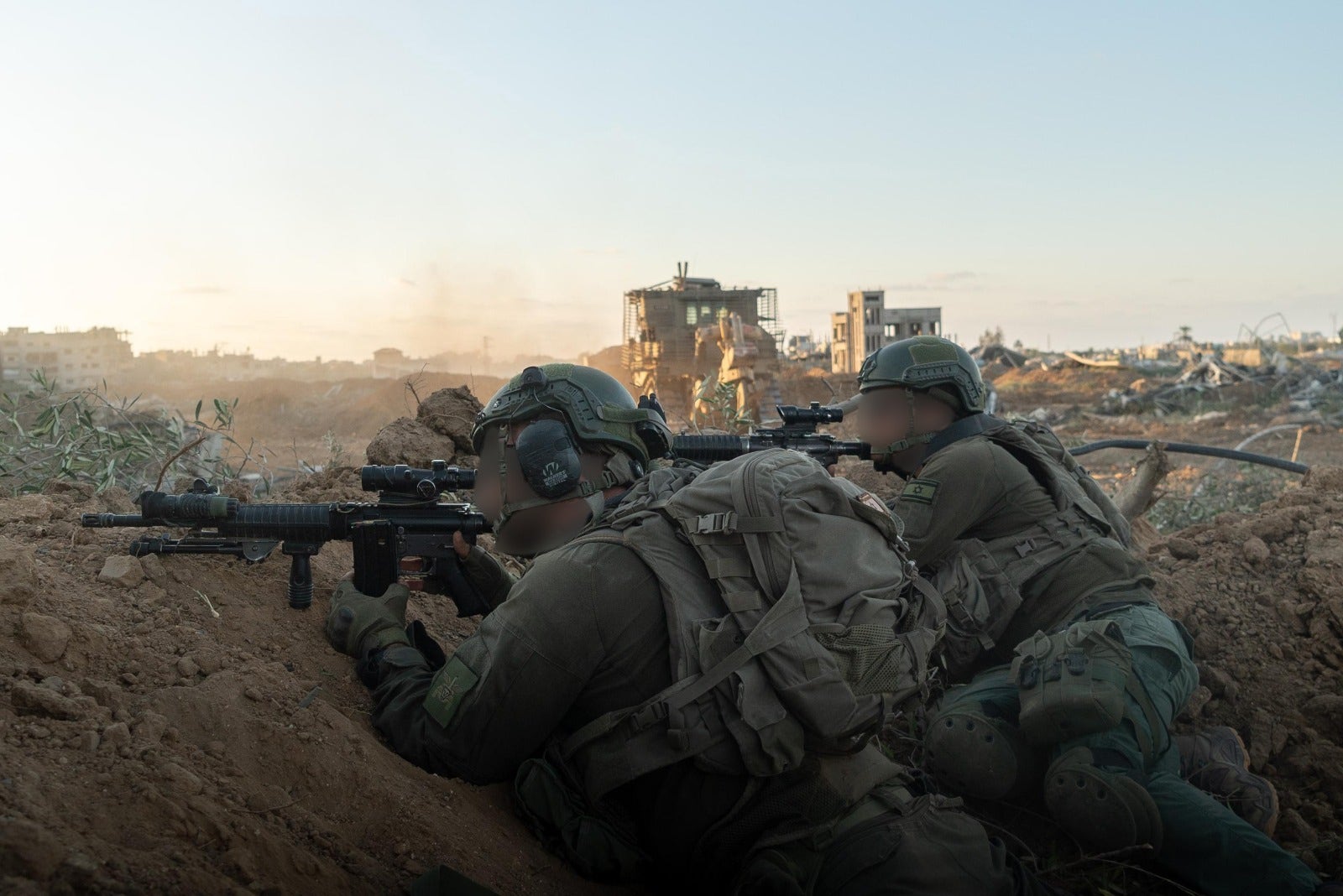
Gaza hostage crisis negotiations persisted last week, with Israel, the U.S., Egypt, and Qatar seeking a resolution. Meanwhile, the conflict continues in the trenches. An IDF colonel stationed in the volatile Netzarim corridor in Gaza shared his insights with Planet Chronicle Digital.
Gaza is divided by the Netzarim Corridor, where IDF Col. Amir Ofri organizes his troops against terrorists. The atmosphere is tense, he says, and recounts a recent incident where a Gazan woman approached his unit checkpoint, her movements erratic, indicating disorientation. As she drew nearer, he remembers her repeatedly glancing over her shoulder, seemingly hesitant to come closer. He says it was evident to him that she was under the influence of drugs.
Ofri tells Planet Chronicle Digital that they try to evaluate whether the woman is a threat or has weapons. However, as she gets closer, it becomes clear that she is being directed by someone behind her. The decision is made to send her back, but as they do, the soldiers identify Hamas spotters in a nearby school in the refugee camp of Al-Bureij. As the soldiers move closer, terrorists fire at them from the windows, releasing anti-tank missiles and explosives.

"During a Zoom interview, he says that Hamas mistreats women and children in an extremely harsh manner, which he finds appalling."
On the morning of Oct. 7, 2023, Col. Ofri was celebrating his 46th birthday with his family in the north. As a seasoned officer, he immediately reported for duty to a base in the Negev Desert, which was about 30 kilometers from the border. By the next day, his reserve armored brigade was positioned at the Gaza fence, ready for whatever lay ahead. "We were the first to enter Gaza on Oct. 21," he recalls.
The weight of his responsibility is immense. "It's been over nine months since I’ve seen my wife and children for more than a fleeting moment," he says. Before the war, he directed a company with factories in Israel, Spain and the U.S. "My partner in Oklahoma was one of the first to call me after Oct. 7. He said he hoped the U.S. would send everything it could to help us."

The Netzarim Corridor, which is both a vital source of humanitarian aid and a strategic point in the ongoing conflict, is of utmost importance for his mission. "Our objective is to ensure that the route remains open for humanitarian convoys," Ofri explains. "Each day brings new challenges and risks."
The Netzarim Corridor is crucial in the Gaza Strip. Following the commencement of the ground operation, Israeli Defense Forces created a four-kilometer-wide pathway to divide Gaza into two sections, from its eastern border to the Mediterranean Sea. Notable towns are situated along the route - Jabalia and Zeitoun to the north, and Al-Bureij and Nuseirat to the south.
The other side, Hamas, doesn’t account for the population; they exploit them. The terrorists we eliminate often wear civilian clothes. Some are disguised as women."
Since Israel relinquished control of Gaza 15 years ago, the strategic route has once again been seized by the IDF. With the majority of Gaza's population evacuated south, the IDF has near-total control over significant parts of the Strip. However, this area has become one of the most dangerous in the conflict, with Israeli soldiers being killed and injured since operations began.

"I don't like this mission at all," he concedes. In the early stages of the war, "when the brigade was on the attack, we were more efficient and lethal. In the Netzarim Corridor, the challenges are constant," he remarks.
Although there have been difficulties, Ofri's brigade has managed to operate with minimal casualties. "Sadly, eight fighters from my brigade have fallen since the fighting began," he says somberly. "However, we have not lost any soldiers while securing the corridor, and that is a result of learning from others' experiences."
Since the conflict in Gaza began, the humanitarian crisis has been the focus of media coverage, resulting in criticism of Israel from the U.N. and various countries, including the U.S. Numerous organizations have emphasized the need for the military to minimize harm to civilians, who are facing significant difficulties.

"Despite the challenging circumstances, the people living in tents are well-provided for with food and water. Each day, we transport approximately 30 trucks filled with supplies to the area. However, the other side, Hamas, does not take into account the population and exploits them. The terrorists we eliminate often disguise themselves as civilians, including women."

As a convoy was passing by, an unexpected vehicle joined the line. When we stopped, terrorists emerged from that vehicle, one of them disguised as a woman, and opened fire. We managed to eliminate two of them, while the remaining two escaped back into the vehicle.
""We passed all the convoys we needed, but then we saw Hamas setting up roadblocks and looting them. Hamas targets specific trucks and unloads supplies quickly, moving items into warehouses. We observed armed Hamas vehicles leaving those locations, with guards at the entrances," he explains the complex situation on the ground."

I have been in combat for a year and can confirm that the IDF does not use civilians as human shields in operations against Hamas. As the commander of the brigade, I ensure that all operations are conducted with precision and care to minimize collateral damage, especially when it comes to women and children.
The Gaza Health Ministry, controlled by Hamas, reports over 42,000 deaths in Gaza, while Israel maintains a lower figure but refuses to disclose its evaluation. Hamas does not distinguish between civilians and terrorists when tallying its casualty count.

Hamas's cynical use of the population is the root cause of the problem, according to Ofri. He holds the terror organization responsible for the loss of so many civilian lives, as seen during the recent Iranian attack. On October 1, Hamas operatives attacked us, using short-range mortars to exploit the situation and push civilians toward our position. This forced people out of refugee camps and created a dangerous environment as they were told to move closer to our forces.

In October, Hamas leader Yahya Sinwar, who orchestrated the Oct. 7 attack, was killed by the IDF in Rafah, southern Gaza. While some believe Sinwar's death could mark a turning point in the conflict, Ofri is skeptical. "In my view, he was just another terrorist who deserved to die. He was another obstacle in the effort to release hostages. I understand we won't be able to free them through military means alone. However, I believe military pressure is the only strategy that has led to the first hostage deal."
Israel must continue fighting because of the hostages, Ofri says. There are 101 hostages left, many of whom are relatives of our soldiers. Oct. 7 affected us all, and Ofri lost friends that day as well. Despite the difficulty, they come together time and again. Any soldier will tell you it's about the hostages.
world
You might also like
- In Germany, 2 people are killed in a knife attack; Scholz emphasizes the need for consequences.
- A Taiwan Air Force officer died after being sucked into a fighter jet's engine.
- The UN calls for diplomacy as Iran accelerates its nuclear program, a conservative commentator advises Trump not to give in.
- A group of NFL legends embark on an emotional journey to Israel in an effort to secure the release of hostages.
- Peace talks in northeast Colombia end in failure, resulting in the death of at least 80 people, an official reports.
